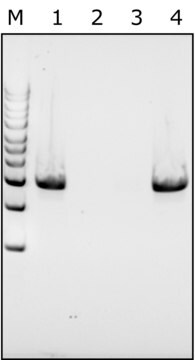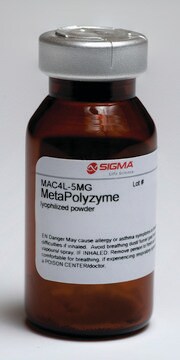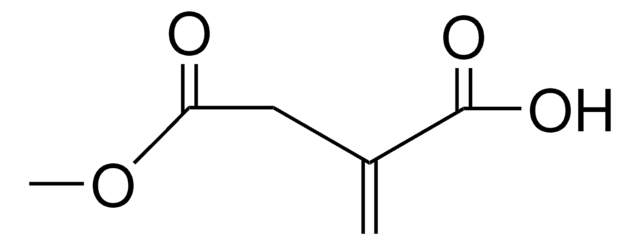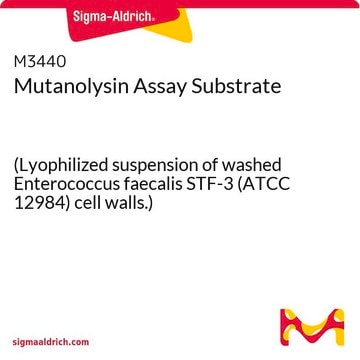SAE0091
Lysostaphine from Staphylococcus staphylolyticus
free of DNA contaminants, ≥500 units/mg protein, lyophilized powder, suitable for Microbiome research
Synonyme(s) :
Glycyl-glycine endopeptidase
About This Item
Produits recommandés
product name
Lysostaphine from Staphylococcus staphylolyticus, free of DNA contaminants, suitable for Microbiome research, lyophilized powder, ≥500 units/mg protein
Source biologique
microbial (Staphylococcus staphylotyticus)
Forme
lyophilized powder
Activité spécifique
≥500 units/mg protein
Poids mol.
27 kDa
Caractéristiques
DNA free
Conditions d'expédition
wet ice
Température de stockage
−20°C
Vous recherchez des produits similaires ? Visite Guide de comparaison des produits
Application
Lysostaphin is a zinc metalloenzyme isolated from a bacterial culture of Staphylococcus staphylolyticus. It has specific lytic action against other Staphylococcus species, including S. aureus.1,2 Lysostaphin has
hexosaminidase, amidase, and endopeptidase activities. It cleaves polyglycine crosslinks in the cellular wall which leads to cell lysis of Staphylococcus species, but not of other bacterial genera. [Pharmaceuticals 2010, 3(4), 1139-1161]
Lysostaphin is a single polypeptide chain of 246 amino acids, a molecular mass of 26,926 Da, isoelectric point of 9.5, (5) and an activity pH optimum of 7.5.(6)
Actions biochimiques/physiologiques
pH optimal en termes d'activité : ~7,5
Définition de l'unité
Forme physique
Mention d'avertissement
Danger
Mentions de danger
Conseils de prudence
Classification des risques
Resp. Sens. 1
Code de la classe de stockage
11 - Combustible Solids
Classe de danger pour l'eau (WGK)
WGK 3
Point d'éclair (°F)
Not applicable
Point d'éclair (°C)
Not applicable
Certificats d'analyse (COA)
Recherchez un Certificats d'analyse (COA) en saisissant le numéro de lot du produit. Les numéros de lot figurent sur l'étiquette du produit après les mots "Lot" ou "Batch".
Déjà en possession de ce produit ?
Retrouvez la documentation relative aux produits que vous avez récemment achetés dans la Bibliothèque de documents.
Les clients ont également consulté
Articles
Enzymatic cell lysis and protoplast prep processes demystified, revealing complex enzymatic reactions during sample preparation.
Notre équipe de scientifiques dispose d'une expérience dans tous les secteurs de la recherche, notamment en sciences de la vie, science des matériaux, synthèse chimique, chromatographie, analyse et dans de nombreux autres domaines..
Contacter notre Service technique














